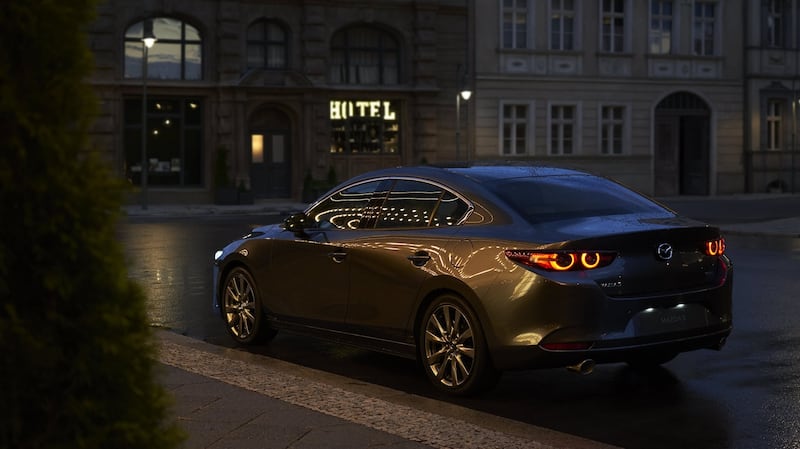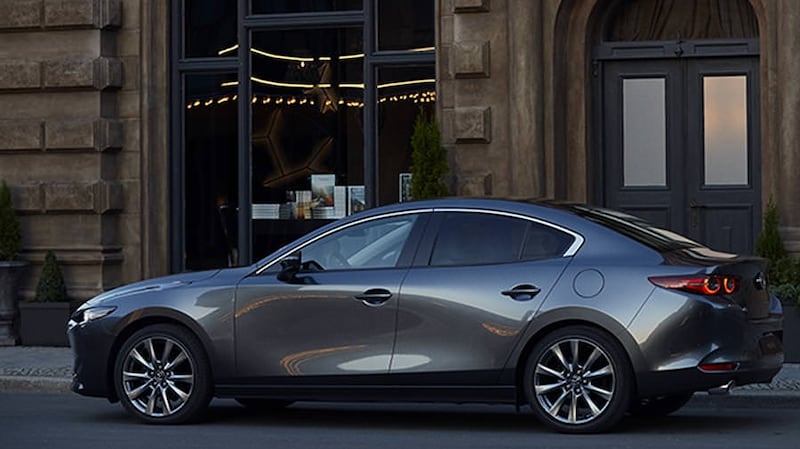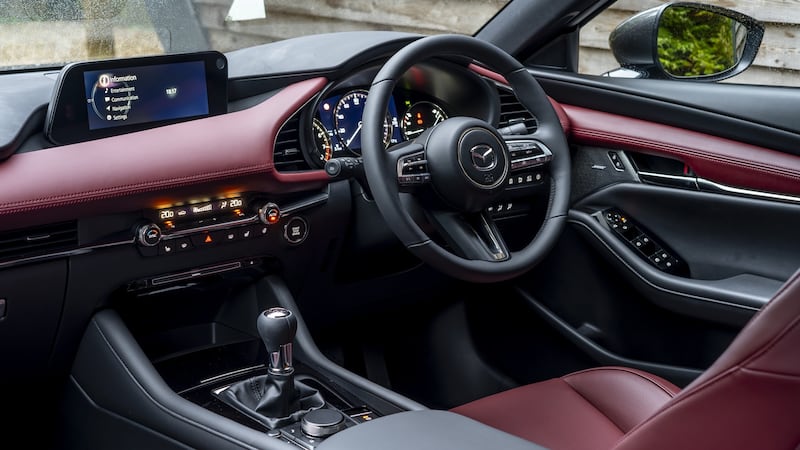It’s not just a case that the jury is out, it’s more a case that the judge has called a recess and the courtroom staff have left the building. The deliberations are going to take years on this one. Standing in the dock is Mazda’s clever new Skyactiv-X petrol engine, and it’s facing charges of not living up to its billing as a fuel-saving, diesel replacement. The problem for both prosecutor and defence is that, really, it kind of does stack up, and then again kind of doesn’t.
Mazda, if you know your motoring history, has form in the oddball engine arena. The Japanese company kept rotary engines going well past their sell-by date (to the delight of enthusiasts, if not necessarily of all owners), and more recently has (successfully) ploughed a furrow of using large-capacity, naturally-aspirated engines to achieve the sorts of fuel and emissions savings that everyone else turns to turbos and downsizing for.
First off, let the record show that this is a seriously good looking car
Skyactiv-X is something different again. Technically it’s a spark-controlled compression ignition engine, or SCCI, and that means, in the broadest possible terms, that it burns petrol, but does so like a diesel engine.

Of course, it’s not that simple. Diesel engines operate by compressing the fuel and air squirted into their cylinders, pressing and pressing and pressing, increasing the pressure until – following the Gay-Lussac law – the pressure increase causes the temperature in the cylinder to exceed the flame point of the fuel, and then the whole lot explodes, pushing the piston back down.
It’s a hugely efficient way of burning fuel (hence why diesel engines are, generally, so economical) but it’s noisy, the fuel itself is smelly and unpleasant, and as we are increasingly aware, it’s very dirty, spewing both particles of soot and noxious gasses, such as nitrogen dioxide. These then have to be dealt with using expensive exhaust filters and injections of urea fluid, and so diesel engines, to be clean enough to use, are becoming increasingly expensive.
The Skyactiv-X doesn’t simply put petrol into a diesel compression cycle. It uses a little more finesse than that. Basically, at first, it is very diesel-like. The compression is high, 16.3:1 which if you’re an engineering nerd is way, way higher than anyone else squeezes their petrol mixtures. That’s not enough to generate combustion, though.
The Skyactiv-X uses a massively lean mixture – far, far more air than petrol in the mix, like those 1990s "Lean Burn" Toyota engines but turned up to 11 – so it needs a final kick to explode. That comes in the form of a tiny, final, extra squirt of fuel that is ignited by a small spark plug. That doesn't ignite the entire mixture, but it is enough to increase both pressure and temperature (which we now know are inextricably linked) to tip the whole mixture over into combustion.

It sounds incredibly nerdy. It is incredibly nerdy, really, but it’s also fascinating, and it has taken two decades of patient research to bring it to the market. So, was it worth the effort?
Well, after a slightly inconclusive recent test on Spanish roads in a CX-30 crossover, here we are, at home, on familiar tarmac, in a Mazda 3 saloon fitted with the 2.0-litre 180hp Skyactiv-X engine.
First off, let the record show that this is a seriously good looking car. Even if, necessarily, it’s less good looking as a four-door saloon than as a five-door hatch, the new Mazda 3 has got the handsome thing down pat. It’s nice inside too, with a level of cabin quality that’s right up there with the best, and the good thing about the saloon is that it has a flatter windowline at the back, so lets in more light for those sitting in the rear seats. A small detail, but worth remembering if you have to carry kids around a lot.
In terms of its chassis, it’s just delightful. Light but responsive and accurate steering, and a laser-like sense of precision through corners. Only a slightly too chunky ride quality detracts.
Okay, all of that is good, but equally it’s all stuff we could say about the standard 122hp Mazda 3, with its mild-hybrid engine technology. What about Skyactiv-X?
Well, m’lud, it definitely feels more muscular than the standard 122hp engine. As well it might – it has an extra 58hp after all, although the torque figure of 224Nm is only slightly higher, albeit the torque comes in earlier and stays around longer. The Skyactiv-X too has mild hybrid assistance, so there’s an (entirely imperceptible) extra electric kick when you accelerate hard, and longer-lasting stop-start when you’re creeping in traffic.
Listen very, very carefully at tickover and low speeds, and you'll actually hear a faint gurgling noise from the engine
Performance is at the languid end of the scale. In spite of that 180hp power output, this is no warm hatch, let alone hot, and you have to work the engine hard to achieve decent acceleration. At least the sweet-shifting gearbox helps in that regard.
Listen very, very carefully at tickover and low speeds, and you’ll actually hear a faint gurgling noise from the engine. It’s not a diesel clatter, quite, but it does sound almost as if someone is revving a diesel engine about three counties away. It’s odd, but rarely intrudes and if you have the radio on, you’ll never notice it.

You’ll notice the economy, though. Counsel for the defence would like to point out that, on long motorway runs, the Skyactiv-X engine managed to eke out fuel at a rate of 5.8 litres per 100km, close to 50mpg, and that was with the air conditioning going. That’s pretty impressive.
Under cross-examination, though, counsel for the prosecution pointed out that urban miles decimate that economy, and that overall in our hands the Skyactiv-X returned 6.8 litres per 100km – 41mpg – which is rather less impressive.
The defendant asked for other items to be taken into account. That it’s a more powerful engine than the 122hp motor, but returns very similar overall real-world economy. That the tech is really just getting started, and that it took Mazda a while to get its conventional Skyactiv diesel and petrol engines to a point where they were returning decent everyday fuel consumption (early Mk1 2.2-litre diesel CX-5s were woefully thirsty, it must be noted).
There's probably no way a jury would convict on this evidence, but equally hard to see an outright acquittal happening. Maybe it's best to go with a verdict normally only used by courts in Scotland – not proven.
Mazda 3 Saloon 2.0 Skyactiv-X Platinum Sport: The lowdown
- Power 180hp
- Torque 224Nm
- 0-100km/h 8.2 sec
- Top speed 216km/h
- Claimed consumption 5.6l/100km (50.4mpg) (WLTP)
- CO2 emissions 127g/km
- Motor tax €190
- Price €37,270 as tested; Mazda 3 starts at €28,320
- Verdict Clever tech could score major fuel savings, but it's intermittent at best for now.










